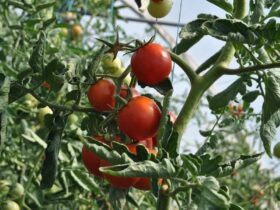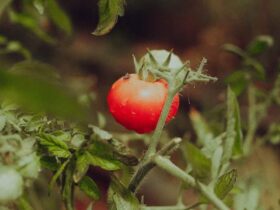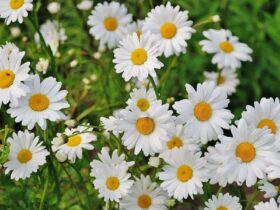The tantalizing aroma of freshly picked strawberries, their vibrant red hue, and the burst of juicy sweetness with every bite make them a favorite fruit for many. But have you ever paused to ponder the journey these delightful berries undergo before reaching our baskets? Beneath the realm of our sight, an intricate dance of nature unfolds, setting the stage for the birth of each berry. At the heart of this dance is the pollination process. As with many fruits, strawberries owe their existence to this vital ecological step, and understanding it provides a fascinating insight into nature’s meticulous choreography. Yet, a recurring question that arises among growers and enthusiasts alike is: “Do strawberries really need to be pollinated?” On the surface, it might seem like a straightforward query, but delve a little deeper, and it reveals a complex interplay of botanical processes, environmental factors, and even the dedicated work of tiny pollinators. In this post, we’ll explore the captivating world of strawberry pollination, shedding light on its significance, the challenges it faces, and its impact on the very essence of the strawberries we so cherish.
Do Strawberries Need To Be Pollinated?
Yes, strawberries do need to be pollinated for optimal fruit development. While some strawberry varieties can self-pollinate, cross-pollination (often facilitated by bees and other pollinators) typically results in larger, more uniformly shaped fruits. Proper pollination ensures that the strawberry fruits fully form and develop a sweet taste. Without adequate pollination, strawberries might be small, misshapen, or lack the desired flavor profile. So, while strawberries can produce fruits with minimal pollination, for the best quality berries, pollination is crucial!
How Do You Pollinate Strawberries?
Strawberries, with their sweet taste and juicy texture, are among the most beloved fruits in gardens and on tables worldwide. While many strawberry plants can self-pollinate to some degree, ensuring adequate pollination often results in larger, tastier, and more uniformly shaped berries. Here’s how you can ensure your strawberry plants are well-pollinated:
Nature’s Best Pollinators: Bees
One of the most effective and natural ways to pollinate strawberries is by attracting bees. Bees are adept at transferring pollen from one flower to another as they forage for nectar. To make your garden more appealing to bees, consider planting bee-friendly plants like lavender, borage, and calendula around your strawberry patch. These plants not only attract bees but also add beauty and diversity to your garden.
Hand Pollination: Using A Small Brush Or Cotton Swab
If you’re growing strawberries in a controlled environment, like a greenhouse, where natural pollinators might be scarce, you can take matters into your own hands, quite literally. Dip a small brush or cotton swab into the center of a strawberry flower to collect pollen, and then transfer it to the pistils of the same or another flower. This mimics the action of a bee. While this method is more labor-intensive, it allows for precise pollination, especially if you’re trying to control breeding or hybridization.
Using The Power Of Wind:
For strawberry plants grown outdoors, the wind can assist in the pollination process. On a breezy day, the gentle sway of the plants can help distribute pollen among the flowers. However, if your strawberry patch is in a sheltered area or if there’s a stretch of still days, you can mimic this natural process. Gently shaking the plants or using a fan on a low setting can help distribute the pollen.
Creating A Vibrant Ecosystem: Encourage Diverse Pollinators:
Apart from bees, several other insects, like butterflies and hoverflies, can assist in strawberry pollination. By planting a variety of flowering plants and maintaining a pesticide-free garden, you can create a welcoming environment for these pollinators. They not only aid in pollination but also help in controlling pests, thus promoting a healthy garden ecosystem.
Understanding Flowering And Fruit Setting Patterns:
Knowledge is key. By understanding when your strawberry plants flower and set fruit, you can optimize pollination strategies. Strawberry plants typically flower in the morning, and the flowers remain receptive to pollination for about a week. Observing these patterns and ensuring pollination during these peak times can significantly improve the fruit set.
Ensuring Optimal Garden Conditions:
Strawberries, like all plants, thrive under certain conditions. Ensure that your plants are getting adequate sunlight, water, and nutrients. Healthy plants are more likely to produce a higher number of flowers, which in turn can increase the chances of successful pollination. Additionally, protecting your strawberries from common pests, like aphids, can prevent potential damage to the flowers, ensuring they remain receptive to pollination.
Monitor And Adapt:
Even with the best efforts, sometimes pollination might not be as effective as you’d hope. Regularly monitor the fruit set and quality of your strawberries. If you notice any misshapen or small berries, it might indicate inadequate pollination. In such cases, consider intensifying your efforts, perhaps by combining multiple methods.
What Happens If Strawberries Are Not Pollinated?
Strawberries are iconic fruits cherished for their sweet taste and delightful texture. The process of pollination plays a pivotal role in ensuring that these berries grow to their full potential. But what happens when strawberries are not pollinated adequately? Let’s explore the consequences:
- Formation Of Smaller Berries: One of the most immediate and noticeable impacts of inadequate pollination is the formation of smaller strawberries. A fully pollinated strawberry flower will generally produce a berry that is plump and sizable. In contrast, a lack of pollination can result in berries that are notably undersized.
- Misshapen Berries: When you come across strawberries that appear to have uneven or irregular shapes, it’s often a sign of partial pollination. Each tiny seed on the surface of a strawberry, known as a ‘drupelet,’ represents a pollinated ovule. If only some of these ovules are pollinated, the berry can grow in a lopsided or deformed manner because only the pollinated parts expand to form the fruit.
- Reduced Sweetness And Flavor: Adequate pollination doesn’t just influence the size and shape of strawberries; it also plays a role in determining their taste. Insufficiently pollinated strawberries might not be as sweet or flavorful as their fully pollinated counterparts. This is because the maturation process is influenced by the extent of pollination, which in turn can affect the berry’s sugar content and flavor profile.
- Lower Overall Yield: Pollination stimulates fruit set. Without proper pollination, some flowers might not produce any fruit at all. This can lead to a reduced overall yield, making it less productive for both home gardeners and commercial growers. In a setting where every berry counts, especially in commercial operations, inadequate pollination can lead to significant economic impacts.
- Potential For Reduced Nutrient Content: While more research is needed in this area, there is some evidence to suggest that the nutritional profile of a fruit can be influenced by its pollination status. Strawberries that are not adequately pollinated might potentially have a different nutrient balance than those that are fully pollinated.
- Implications For Future Harvests: Pollination is crucial for genetic diversity and the reproduction of plants. If strawberry plants are not being adequately pollinated, it can reduce the number of seeds available for future planting. Over time, this can affect the genetic diversity and robustness of strawberry populations.
Potential Threats To Strawberry Pollination
Strawberries, cherished for their succulence and flavor, depend significantly on successful pollination to produce a fruitful yield. However, the process is facing several threats that could hamper the quality and quantity of strawberry production.
One of the primary threats is the decline of natural pollinators, especially bees. Bee populations have been dwindling due to various reasons, including habitat loss, pesticide exposure, diseases, and climate change. As bees play a pivotal role in pollinating strawberries, their decline could directly impact strawberry yields.
Pesticides, particularly neonicotinoids, are another major concern. While they are used to protect crops from pests, they can be lethal to beneficial insects, including pollinators. Even sub-lethal doses can disorient bees, making them less effective at pollination. Overreliance on these chemicals could thus counterproductively hurt the very crops they’re meant to protect.
Unfavorable weather conditions, exacerbated by climate change, pose another challenge. Strawberries are sensitive to their environment, and conditions like excessive rainfall, extreme temperatures, or unseasonal frosts can deter pollinators or damage flowers. Such erratic weather patterns can disrupt the synchronization between strawberry flowering and the presence of active pollinators.
Moreover, monoculture farming practices, where vast areas are dedicated to a single crop, can limit the availability of diverse food sources for pollinators throughout the growing season. This lack of diversity can make environments inhospitable for bees and other beneficial insects, making them seek more diverse areas and leading to reduced pollination in monoculture farms.
Lastly, the spread of diseases and pests that affect strawberry plants can indirectly hamper pollination. Infected or stressed plants might produce fewer or less attractive flowers, reducing the chances of successful pollination.
The Final Words
The pollination process stands as a cornerstone in the cultivation of strawberries, influencing not just their quantity but also their quality. While strawberries possess a certain capability for self-pollination, relying solely on this can lead to smaller, misshapen, and less flavorful berries. Thus, ensuring proper pollination, whether through natural pollinators or manual intervention, is crucial. The intricate dance of pollination not only ensures a bountiful harvest but also preserves the delightful characteristics that make strawberries a cherished fruit worldwide. In essence, for strawberries to reach their full potential, pollination is undeniably vital.
FAQ’s
Can Strawberries Grow Without Being Pollinated?
Yes, strawberries can grow without being fully pollinated, but the resulting fruit may be smaller, misshapen, and less flavorful. Adequate pollination ensures full-sized, tasty, and uniformly shaped strawberries.
What Fruits Do Not Need Pollination?
Several fruits are parthenocarpic, meaning they can develop without pollination. Examples include certain varieties of grapes, bananas, and pineapples. These fruits lack seeds and develop without the need for fertilization.
Can You Pollinate Strawberries Without Bees?
Yes, strawberries can be pollinated without bees. While bees are the primary natural pollinators, strawberries can also be pollinated by the wind or through manual methods using a small brush or cotton swab to transfer pollen from one flower to another. This method is especially useful in controlled environments like greenhouses.




















Leave a Reply